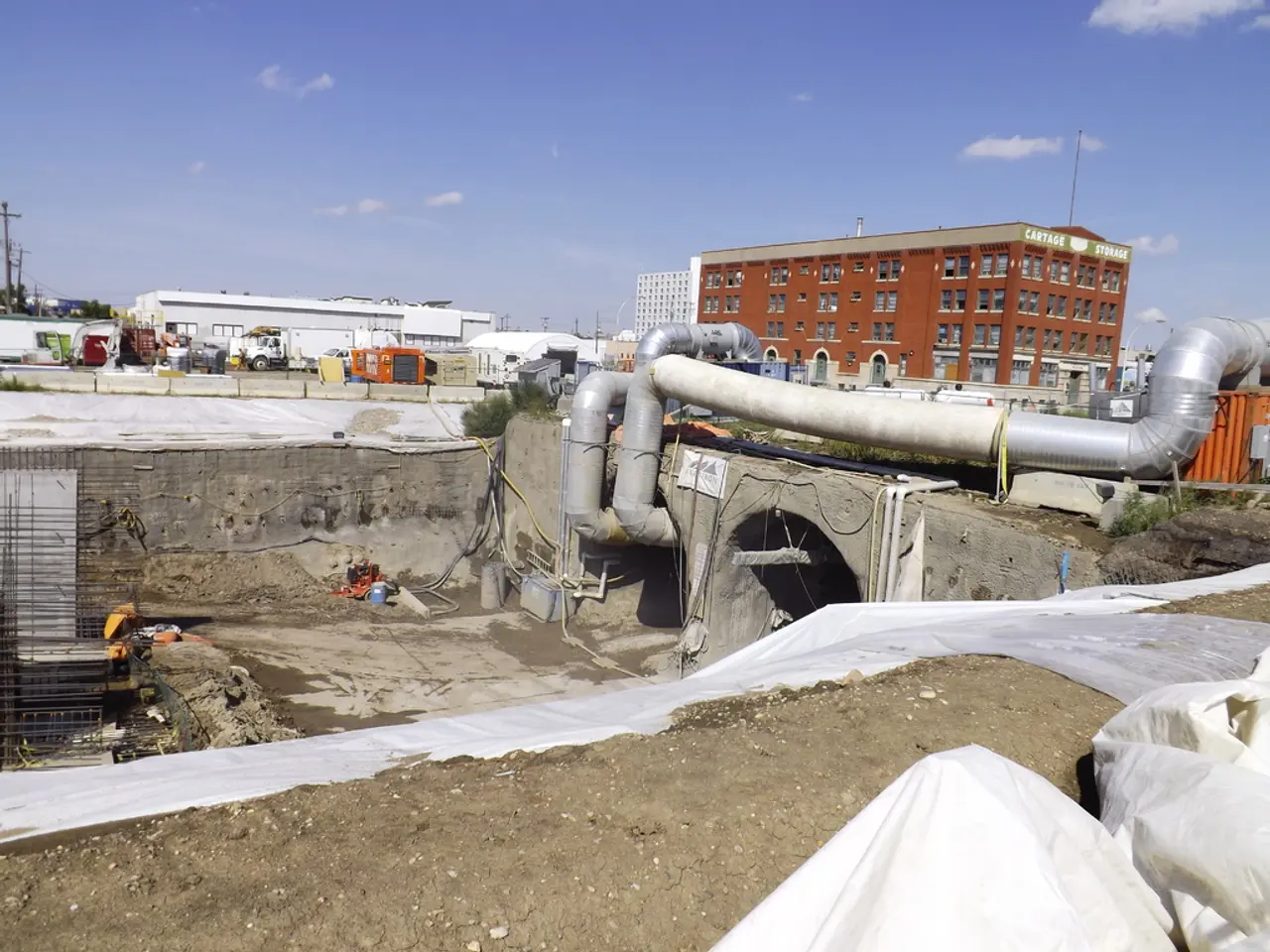Gas prices experience a decline due to high US production levels and an abundance of supplies in the market.
The U.S. natural gas market is experiencing a significant shift, with production levels reaching new highs and consumption patterns evolving, as a result of increased drilling activities and changing export dynamics.
As of July 30, gas storage in Europe was 68% full, compared to the 5-year seasonal average of 76%, indicating a slight deficit. However, in the U.S., the situation is different. As of July 25, nat-gas inventories were down -3.9% year-over-year, but were +6.7% above their 5-year seasonal average, according to the latest EIA report.
The increase in U.S. natural gas output, driven primarily by production growth in the Permian, Appalachian, and Haynesville basins, has contributed to relatively stable or slightly lower natural gas prices in 2025 and 2026. In Q2 2025, U.S. natural gas marketed production reached about 116.8 Bcf/d, up significantly from the prior year, supported by higher prices enabling more drilling and output.
The Energy Information Administration (EIA) projects production to remain near this high level (around 116 Bcf/d) through 2026, with growth mainly fueled by a 6% rise in the Permian region and gains in Appalachia and Haynesville, offsetting declines in other areas. However, production levels are expected to plateau in 2026.
Meanwhile, U.S. LNG exports have expanded rapidly, growing nearly 24% and reaching export volumes to 29 countries. This export growth is a crucial factor increasing U.S. natural gas demand internationally, especially through Gulf Coast LNG terminals, which account for almost all existing and projected new LNG export capacity through 2037.
The Annual Energy Outlook 2025 (AEO2025) projects LNG-related natural gas exports could increase from 4.4 trillion cubic feet (Tcf) in 2024 to nearly 9.8 Tcf by 2037, supporting sustained strong production levels while mildly flattening price increases due to the balancing act between export-driven demand and domestic supply growth.
On the consumption side, estimates for the third quarter of 2025 were lowered slightly, reflecting a possible moderation in domestic demand. Lower-48 state gas demand on Friday was -13.0% year-over-year, and lower-48 state dry gas production on Friday was +3.4% year-over-year.
In the week ending August 1, the number of active US nat-gas drilling rigs rose by +2 to a 2-year high of 124 rigs. This increase in drilling activity is expected to continue, further boosting production levels.
However, the market is not immune to fluctuations. On Thursday, nat-gas prices tumbled to a 3.25-month low, and on Friday, September Nymex natural gas (NGU25) closed down -0.74%. Forecasts for August 6-10 show warmer weather for the Midwest, Southwest, and Texas, which could drive up demand and push prices higher. Similarly, forecasts for August 11-15 show hotter weather across much of the eastern half of the U.S., further increasing demand.
In conclusion, the U.S. natural gas market is experiencing a significant shift, with production levels reaching new highs and consumption patterns evolving. The long-term outlook sees continued LNG export growth supporting sustained production but with price impacts moderated by competing factors like renewable energy growth and regional consumption changes.
[1] U.S. Energy Information Administration. (2025). Annual Energy Outlook 2025. Retrieved from https://www.eia.gov/outlooks/aeo/ [2] U.S. Energy Information Administration. (2025). Natural Gas Weekly Update. Retrieved from https://www.eia.gov/todayinenergy/detail/natural-gas-weekly-update-august-1-2025 [3] U.S. Energy Information Administration. (2025). U.S. LNG Exports. Retrieved from https://www.eia.gov/tools/faqs/faq.php?id=96&t=11 [4] U.S. Energy Information Administration. (2025). Natural Gas Marketed Production. Retrieved from https://www.eia.gov/dnav/ng/hist/weekly/RNGWH1USM.htm
- The increased production levels in the U.S. natural gas market, coupled with rapid expansion in LNG exports, are attracting investors in the energy and finance industry, as the influx of capital potential is massive due to sustained high production levels and future export growth.
- The EIA's projections indicate a continued focus on investing in the shale gas industry within the Permian, Appalachian, and Haynesville basins, as these regions are expected to drive growth and maintain relatively stable natural gas prices, making them an appealing target for finance and energy investors.




